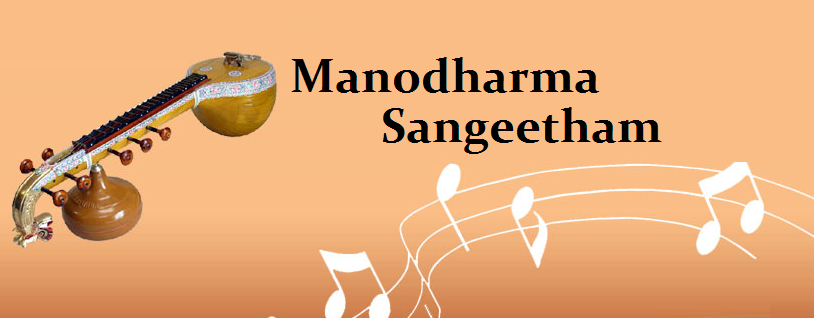Manodharma: The Most Improvised Form Of Carnatic Music
Carnatic music has been ubiquitous right from the vedic age. It is a dynamic system that is fueled by the artistry. Manodharma in Sanskrit means ‘order of the mind’ that refers to the extent for improvisation present to every artiste in their creations. In simpler terms, Manodharma is a polished music that is created right on the spot during the performance within the limitation of strict grammar of music, as organized in the raga or the tala. Almost all the carnatic concerts have one or more music pieces that show the singer’s talent and skills in the form of Manodharma sangeetham. So, it becomes vital to learn Manodharma as it is essential aspect of Carnatic music.
When you learn Manodharma, you are then capable of developing your own unique style. Manodharma has several forms and the person develops varied styles based on his/her musical values, understanding and interpretation. There is huge scope of Manodharma when interpreting tanam, kritis, alapana, swaram or neraval. After years of training, learning and experimenting distinct forms of compositions like kritis, javalis, varnams and many more, the performers are able to cultivate Manodharma.
Manodharma plays such an important role that any talented artiste will never render the same raga in the similar way twice. In order to bring the epitome of a raga, the singers need to resort to the various ragas prayogas of the raga that are often taken from the set compositions like kritis, varnams and many more. For any starter to recognize a raga, these exceptional prayogas turn out to be highly beneficial. Keeping this in mind, the “lakshana” of the raga, its jeeva swaras along with the special prayogas, the performer can easily create the raga making use of the varied combination of swarnas.
A memorable concert will have a perfect blend of Manodharma Sangita and Kalpita Sangita. In this article, we will discuss the vital components of Manodharma Sangita.
Essential Components Of Manodharma Sangita
Raga Alapana
Alapana is an ultimate form of melodic improvisation which introduces and creates raga in Indian classical music. Alapana basically precedes a song that is chirped in the identical raga. It is rendered in varied speeds with a continuous rise in tempo. As said, the intricacy of the patterns grows slowly as alapana improves.
Alapana is generally split into three parts:
- Akshipthika
- Magarini
- Ragavardhini
In Carnatic music, Alapana which is also known as Ragam is termed as the elucidation of tone or raga- a slow modification with no rhythm, where raga forms the basis of adornment. While performing Alapana, performers take into consideration every raga as an object which has both start and end and consists of a series of emotions.
Niraval
Niraval, popularly known as Neraval or Sahitya Vinyasa is said to be one of the vital features in the extempore modification aspect of carnatic music. Niraval is crucially the extempore elaboration, construction, and refinement of swaras for a specific line in the kriti within the framework of talam that showcases the Raga bhava efficiently.
Pallavai
Pallavai is basically considered as the thematic line of a song in Carnatic music. It is as long as one cycle and repeated twice with the aim to give the percussionist the idea of the selected taalam. There are times when it is repeated few times making use of the varied phrases of the Ragam for which the song is set. Pallavai comes with an array of items that are stated as a single term:
- Pa is taken from padam which simply means phrase or word.
- Lla is derived from layam that states rhythm.
- Vi comes from vinyasam meaning imagination.
In A Nutshell
Finaly, hearing to the live concerts of great artistes can turn out to be beneficial for students for structuring alpanas and developing neraval, kalpana swara and tanam. With a great understanding of basics of carnatic music, students can earn a huge appreciation of this beautiful art.
















